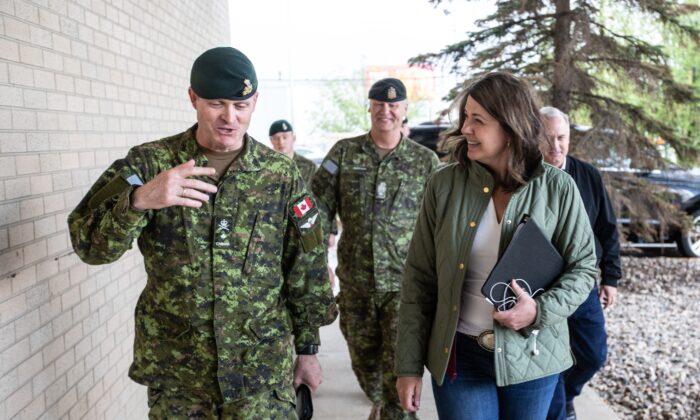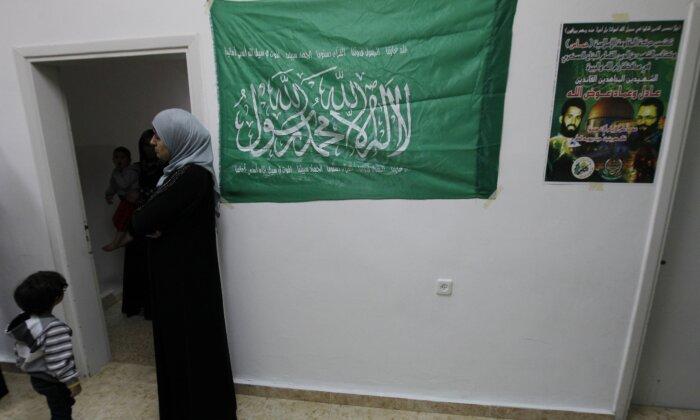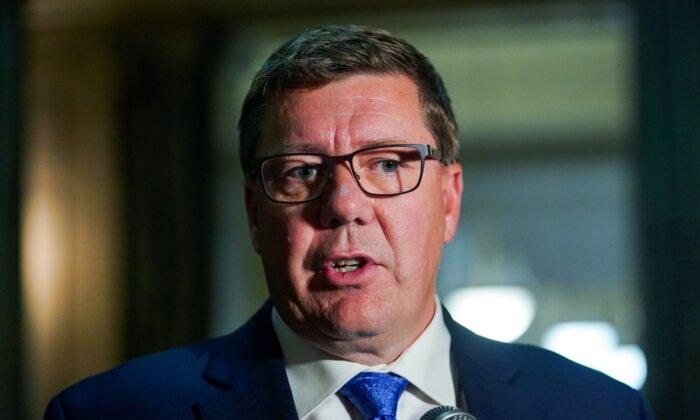With Alberta wildfires expected to last several months in some cases, the province has announced it will provide emergency financial assistance to residents forced to evacuate their homes due to wildfires.
“This means that an evacuated family of four will receive $3,500 to help get through these dark days and to meet their immediate needs,” she said. “These payments will help evacuees pay for accommodations, food, and other basic necessities. The payments will make those expenses one less thing for people to worry about so that they can concentrate on their families and their own well-being. We know that this is a tough time.”

Evacuees can either apply online using a verified alberta.ca account, or call the wildfire resource line to get help with an application. In most cases, payments will be provided by e-transfer, which the premier said is the most efficient and quick way to receive the money.
Residents in remote locations including Indigenous reserves and Metis settlements will also be eligible to apply for payments.
“I’m deeply proud of the incredible dedication and resilience of our first responders, our communities, our First Nations and Metis settlement partners, and all Albertans,” said Smith.
Other Support
Earlier in the day, the province announced it had requested military aid to help with firefighting efforts and guard against “looting and disorder” in evacuated communities. Alberta requested a number of support measures from the federal government such as additional firefighting resources, airlift support, water purification, engineering support, and heavy equipment.Alberta’s Public Safety Minister Mike Ellis spoke at the news conference. He indicated that all the fires burning throughout the province have “incident command teams” managing efforts on the ground. When those teams request more help, the province provides the necessary resources, said Ellis.
Ellis said that in speaking with federal minister Bill Blair, it was made clear to the province that the Canadian military “is limited in their capabilities when it comes to firefighting.”
Princess Patricia’s Canadian Light Infantry has indicated they have 300 individuals trained in firefighting, and the military has said it would put out a call to reservists who have firefighting training in the hopes of “having local help faster than we expected,” said Smith. She said an indigenous community in northern Alberta has another 450 individuals who are trained in firefighting that would help.
The province put out a call for volunteers on May 8.
“These fires may continue on for several months,” said the premier. “If you work for a private sector company, if you are firefighting qualified, and you are willing to lend a helping hand please email emergencysupportoffers@gov.ab.ca.”

Evacuations
According to the government, close to 300 patients and long-term care residents have been safely evacuated from several Alberta Health Services sites, including Drayton Valley Hospital and Care Centre, Edson Health Care Centre, Fox Creek Health Care Centre, and High Prairie Health Complex.“These relocations are happening through EMS, through charter buses, and flights as required, depending on specific needs. Healthcare workers across the province are working around the clock to ensure patients and residents are safely cared for in temporary locations,” said Smith.
Ellis said that as of May 8, there have been 54 schools in Alberta closed due to wildfire evacuations, affecting roughly 10,500 students. Ellis said contingency plans were being developed in the event evacuations continued for a longer period of time.

Status
Alberta remains under a state of provincial emergency and the response is at the highest level. There are 98 active wildfires burning in the province, 17 states of local emergencies, as well as two band council resolutions. The total area burned so far this year in the province is close to 391,000 hectares, as of May 8.“There are 15 evacuation orders in place, with more than 29,000 individuals safely evacuated from their homes, and 10,000 evacuees have registered at 11 reception centres,” said Colin Blair, executive director of the Alberta Emergency Management Agency.
Alberta Wildfire’s Christie Tucker also spoke at the news conference to report that the province currently has over 700 wildland firefighters, along with heavy equipment and air tankers, presently responding to wildfires in the province.
“An extra 20 firefighters arrived from British Columbia yesterday and they'll be sent to assist on wildfires, along with close to 80 wildland firefighters that came from Ontario and Quebec,” said Tucker.
“We’ve also requested additional firefighting resources through the Canadian Interagency Forest Fire Centre in Winnipeg. We’ve asked for up to 1,000 firefighters from the Yukon, Ontario, Nova Scotia, and New Brunswick, and we’re expecting them to arrive in the next week,” she added.
Since 1982, the Canadian Interagency Forest Fire Centre, a not-for-profit corporation owned by federal, provincial, and territorial wildland fire management agencies, has been the organization that coordinates all firefighting resources across the country. The CIFFC operates seven days a week during fire season, coordinating the sharing of firefighting resources across the country, which includes equipment, personnel, and aircraft.
The organization has a reciprocal agreement with the United States to share resources for fire suppression across the border.
According to Tucker, the province has been working closely with CIFFC since the beginning of the province’s wildfires. “When a fire breaks out somewhere that we know, when we realize we will need extra assistance, those calls are made right away,” she said.





